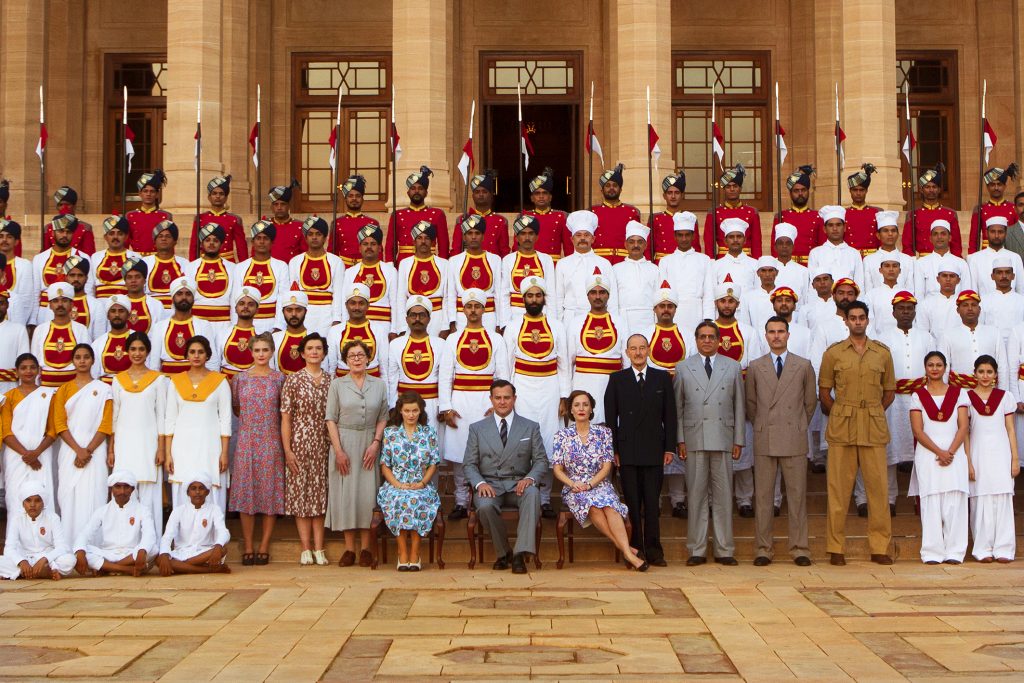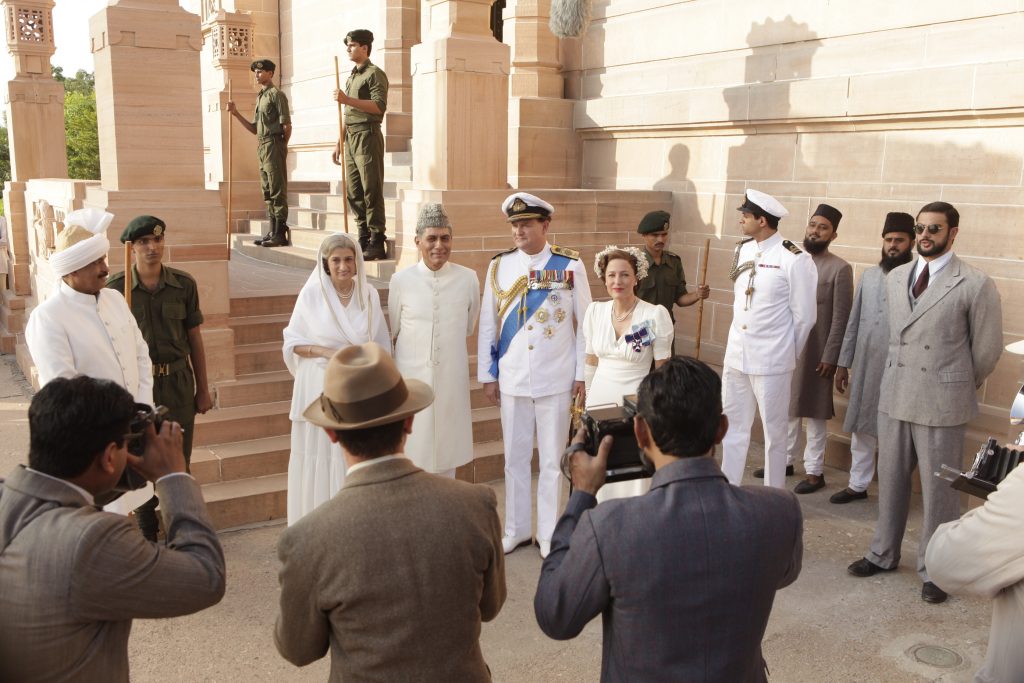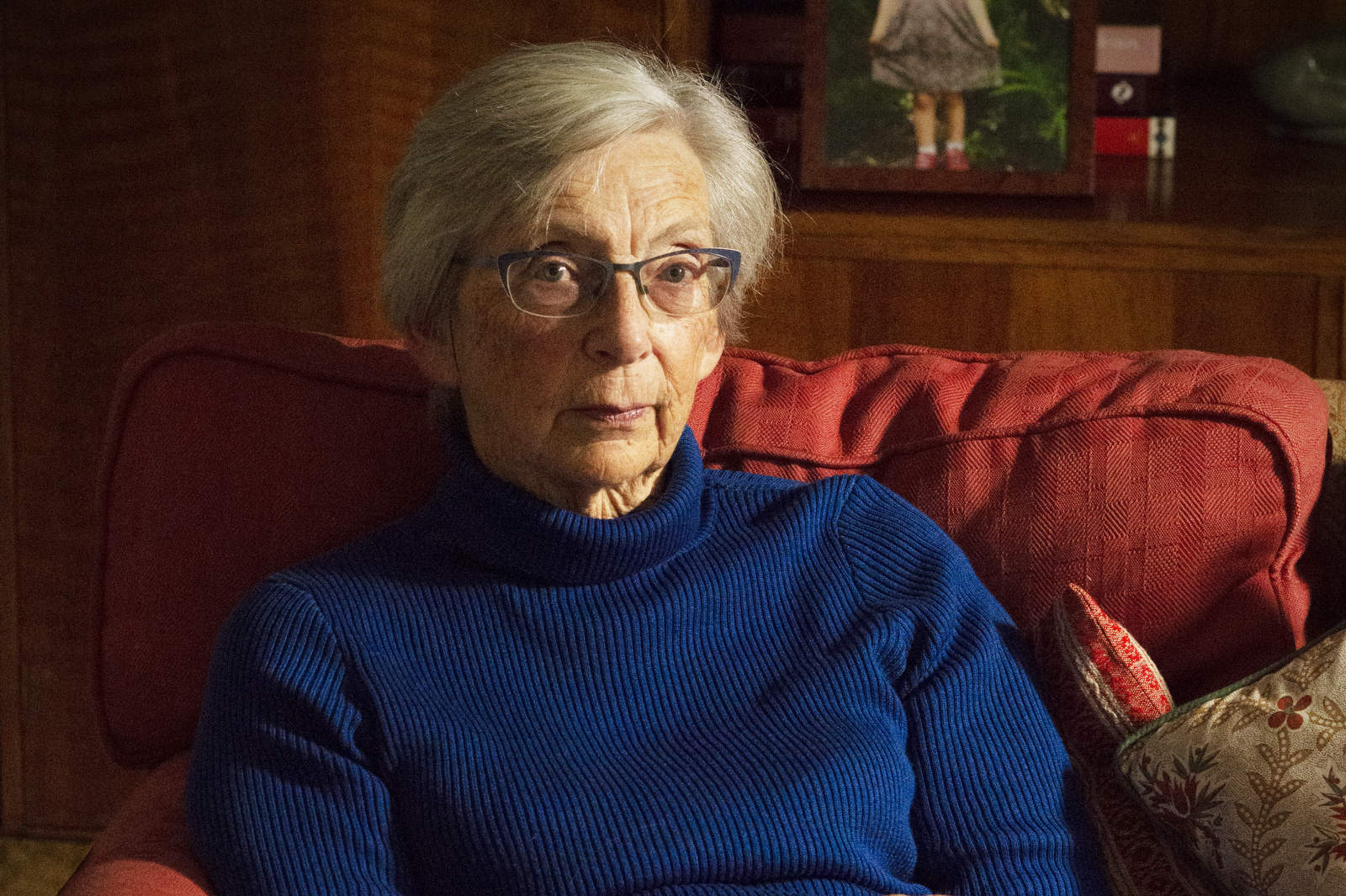“Bend it like Beckham has been the bane of my life,” says Gurinder. “Everyone wanted me to make the same film over and over again, but I wanted to make a big epic film that would wow the public and also tell the story of the little girl whose aunt died of starvation and who lived to be my grandmother.”
Viceroy’s House tells the story of Lord Mountbatten, the last Viceroy of India, and the subsequent Partition of the colonised subcontinent in 1947.

Gurinder believes that seventy years on from Partition, people do not know the history of the British Empire, that it is not taught in schools (a view confirmed by a thirty-year-old Londoner who told me he had never once heard the Empire mentioned throughout his education), and that in India and Pakistan also people are unware of the history of Partition.
So here is one version of the history.
By 1945 Britain was weakened by WW2 and forced to acknowledge that Indian independence was inevitable. Decades of political struggle were paying off for India. The leaders of opposition to imperial rule were Jawaharlal Nehru of the National Congress Party, Muhammad Ali Jinnah of the Muslim League and Mahatma Gandhi. They had all served terms in British jails. Nehru and Gandhi believed that in an independent India all religions could live together as citizens; Jinnah believed that Muslims would never be treated fairly in a united India and that they should have their own independent state. In the months prior to independence, civil unrest, riots and violence were increasing, and Lord Mountbatten panicked. No wonder.
Historians Ian Talbot and Gurharpal Singh wrote in The Partition of India: “There are numerous eyewitness accounts of the maiming and mutilation of victims. The catalogue of horrors includes the disembowelling of pregnant women, the slamming of babies’ heads against brick walls, the cutting off of victims’ limbs and genitalia and the display of heads and corpses. While previous communal riots had been deadly, the scale and level of brutality was unprecedented.”
Neither the British nor the newly formed governments were equipped to deal with the ensuing migrations and the violence and slaughter that occurred on both sides of the borders. Estimates of the number of deaths vary, with low estimates at 200,000 and high estimates at 2,000,000.
Gurinder tells her story by means of upstairs‒downstairs relationships in the Viceroy’s house. Upstairs the Raj is serenely continuing its racist, domineering way; downstairs is seething with rivalry and discontent. The wider political picture is shown by archive footage.
“Post WW2 the view was that Britain and America were taking the map of the world and were deciding how they were going to control everything. The result was new borders and the ordinary people becoming migrants and victims and being criminalised in the process,” she says.
The film makes much of the drawing of boundaries. In the timescale they were given, the diplomats had an impossible task, and especially the civil servant Cyril Radcliffe who was chair of the boundary committee. And then it transpired that all the negotiations were a waste of time because Churchill himself had drawn the boundaries, entirely in Britain’s self-interest, and these were imposed. The result was disastrous and led to the creation of East and West Pakistan, three wars between India and Pakistan, including the independence of Bangladesh in 1971, and the festering situation in Kashmir.

“I had a choice, either to make a very detailed film about the history, which would have been a documentary; or to give a voice to the people you never hear and get as many people as possible to watch the film.”
She includes a compelling love story that encapsulates the religious divide and family loyalties and culminates in the notorious massacre of all the Muslims on a train making its way to Pakistan.
“Immediately after editing Viceroy’s House I made a documentary on Partition which will be on BBC soon. People in India don’t know this history. It is new to them. Young Pakistani people come out of the film and sob. They had not realised the sacrifices people made to achieve Jinnah’s utopian vision of a secular society that had good relationships with everyone. They realise that vision has been betrayed. English friends say Britain got off very lightly in the film, but they are determined to learn more about what happened.”
It is obviously impossible to make a film like this without offending whole communities. But the film is what it is: an attempt to entertain people, involve them, engage them and make them aware of their history so that they can go out and learn more for themselves.
By Jim Mulligan



